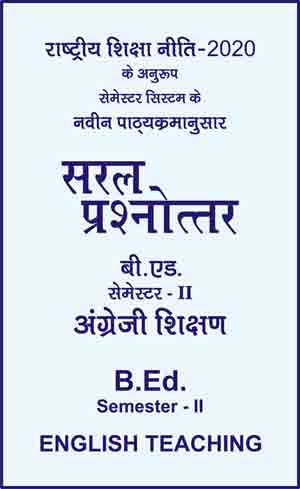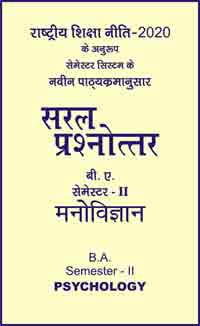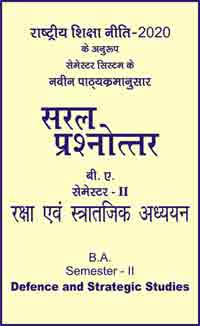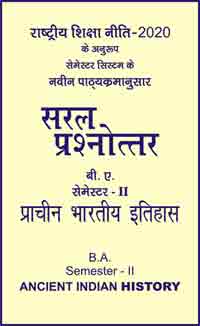|
बी एड - एम एड >> बीएड सेमेस्टर-2 अंग्रेजी शिक्षण बीएड सेमेस्टर-2 अंग्रेजी शिक्षणसरल प्रश्नोत्तर समूह
|
5 पाठक हैं |
||||||
बीएड सेमेस्टर-2 अंग्रेजी शिक्षण - सरल प्रश्नोत्तर
Question- Discuss the general aims of teaching English.
Or
"The aims of teaching English should be linguistic and practical." What is your opinion about this statement ?
Or
What are the objectives of teaching English as a second language ?
Ans.
General Aims of Teaching English - General aims are the long term aims of far reaching consequence, and are spread over a considerable period of time. These are broadly spite out destination one has to reach in its pursuit of learning. The general aims of teaching English may be divided into following aspects -
(i) The Semantic Aspect of General Aims - The sematic aspect of general aims means the understanding of the meaning; meaning of words and their ralationship with other words used in a sentence. It deals with comprehension. The word-meanings are basic to language-learning.
(ii) The phonetic aspect of general aims - The phonetic aspect of general aims is the sound aspect. It deals with speech-sounds; spellings, pronunciation, etc. The words learnt must be spoken in a socially acceptable manner.
(iii) The graphic aspect of general aims - The graphic aspect of general aims is the writing aspect. It deals with the graphic representation of the language, its script and therefore, deals with writing of a language.
(iv) The phonetic-cum-graphic aspect of general aims - The phonetic-cum-graphic aspect of general aims is the reading aspect.
Based on the above analysis of the general aims of teaching, the following general aims are specified for teaching of English.
(v) To enable students to hear and understand spoken English :-
This ability is also called as listening. At this stage a teacher should be absolutely sure of his own phonetics, etc; rather than speak loose in the class.
(vi) To acquire proficiency in spoken English :- This is the speech aspect and relates to application which is a higher cognitive level than knowledge. Here a student will apply, use in spoken form what all he has heard, in whatever form he has heard, it is going to be replica of what he has listened. Speech is based on listening.
(vii) To understand reading :- This is the script aspect. This enables the students to understand what they read in English. This is the comprehension level.
(viii) To write English :- This is the process of the culmination of linguistic skills.
In this way, the task of an English teacher is to train the hearing, reading, speaking and writing abilities of the students. This is the linguistic aim of teaching English. According to Thompson and Wyatt,
"It is necessary that the Indian students should not only understand English when it is spoken or written, but also that he should himself be able to speak and write it."
At the high school or higher secondary stage where English is to be taught as a second language, teachers should be contented with its linguistic aims. An English teacher will not restrict himself to these four linguistic aims; he must transcend them to include literary appreciation and, reading for the pure delight of reading. Palmer remarked as :-
"To aim at literature is to miss the way to language. To aim at language is to pave the way for literature."
Some scholars suggest that the linguistic aspect developed in 5-6 years of learning at the cost of other abilities, may have effect upon the other aspects of learning English. The study of literature can't be postponed for indefinite period. But this is possible when they are well upto the mark in language. As such, we may advance the cause of literary aims also. This is true, literature disciplines the mind of young children. They feel joy in reading it. It develops expression in them.
Thus the teacher will keep in mind that his main aim is to develop four language skills. He will aim at teaching new words and well balanced vocabulary. But he can't omit the written aspect of the language. In the earlier stages, the writing will follow their oral learning. Later on the teacher will teach his students - how to write passages of a page.
Aims should be Practical and Linguistic - We should apply all aims of English teaching in our practical life by following the basic principles of teaching -
(i) Principle of usefulness.
(ii) Principle of universality
(iii) Principle of small steps.
(iv) Principle of frequency
(v) Principle of structural value.
(vi) Principle of practice exercise to establish pattern.
(vii) Principle of oral practice out of class.
(viii) Principle of opportunity for use of the language in communication rather than in translation.
|
|||||













